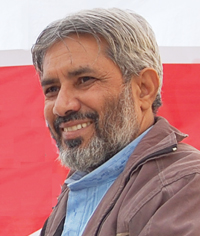The popular Yoga has generated several debates and created many myths in India and elsewhere as regards its veracity, universality and utility, when the United Nations General Assembly declared June 21 as the International Day of Yoga on the suggestion of Indian Prime Minister Narendra Modi. On the occasion of global celebrations of this day, with the main function in India on Rajpath in New Delhi, it seems pertinent to take stock of the whole concept of Yoga in its totality.

21 June has been consciously chosen. It coincides with the death anniversary of the founder of RSS Dr Keshav Baliram Hedgewar. However, the argument floated in the UN in this regard was that 21 June is the longest day of the year being Summer Solstice and as such has great significance in many parts of the world. The global community agreed to the obvious justification.
Those who have some knowledge about Yoga can comprehend well what is understood in the popular parlance as ‘Yoga’ is not Yoga at all but only Asana (postures) which make only one component of the eight ones, taught by Patanjali in Yoga-Sutras. In fact, debate on Yoga is focusing on different Asana used in the exercise, popularly called as Yoga. The Ashtang Yoga of Patanjali (The Eight Limbed Yoga) comprises Yama (abstention), Niyama (observance), Asana (body posture), Pranayam (controlling breadth), Pratyahara (withdrawal of senses from the external world), Dharna (concentration of mind on one object), Dhyana (meditation) and Samadhi (oneness with the object of meditation). Evidently, only the third component of the Patanjali Yoga has been propagated as the Yoga in popular memory, whereas as it requires many things else.
Patanjali Yoga prescribes abstention and observance of some acts as essential for a Yogi. Important Yama integers for practicing Yoga are non-violence, truth and non-possessiveness. However, it is of common observance that those who are untiringly arguing for Yoga are some of the most violent sections in the country. So it denotes a mismatch of their claims and practices as regards Yoga. They also believe in the usefulness of false propaganda for achieving some material gains instead of stressing on the prevalence of truth and have hoards of wealth and properties while contradicting with the condition of non-possessiveness.
Out of the five Niyama one is Ishvara Pranidhana, i.e. complete surrender to God. The adherents of Yoga can be seen in India as the strong upholders of polytheism rather than being monotheists. Even the clear meaning of Ishvara Pranidhanam is sometimes distorted to suit the needs of nature worship. A number of well known yogis in the country consider Muslims as the enemies of their culture although Islam perfectly teaches complete surrender to the Almighty.
The condition of complete surrender to the Almighty God in the Patanjali Yoga is contradicted by the practitioners of Yoga who include Surya Namaskar as its integral part. Definitely the Sun is not a divinity in itself but just a creation of God and cannot be part of the object of reverence and meditation during Yoga. The words used in various postures of Surya Namaskar such as Savitri, Mitra, Ravi, etc in reverence are actually synonyms of God’s divine light and not of the sun. The first use of the root of word "yoga" in hymn 5.81.1 of the Rig Veda, is wrongly interpreted as a dedication to the rising Sun-god in the morning (Savitri). The very verse rejects this belief.
Arvindo interpreted the said verse like this, “The illumined yoke their mind and they yoke their thoughts to the illuminating godhead, to the vast, to the luminous in consciousness; the one knower of all manifestation of knowledge, he alone orders the things of the sacrifice. Great is the praise of Savitri, the creating godhead.” It is evident here that sun cannot be considered as the “knower of all manifestations of knowledge” being a non-living thing. Therefore, the understanding of the word “Savitu” in the verse can only lead to the one Who illuminates the entire world with billions of stars in billions of galaxies, including the star of our own solar system. The wrong inference of the verse points to the utter confusion of the bogey of Surya Namaskar in gripping with the real object of mediation in Yoga.
The essence of a complete Yoga is said to be the discovery of “I-am ness”, i.e. the feeling that ‘I’ exist. However, this discovery is not of much use in navigating through the worldly path. We all know that ‘WE’ exist. The key issue is why we exist? This can be informed only by the One Who created us with all love and compassion or by systematic investigation of the worldly facts. Unfortunately, the popular Yoga deviates people’s mind from this very question.

(Abdul Rashid Agwan is an author of several books including the recent one, “Islam in 21st Century: The Dynamics of Change and Future-making”. He may be contacted on [email protected])




Comments
Add new comment